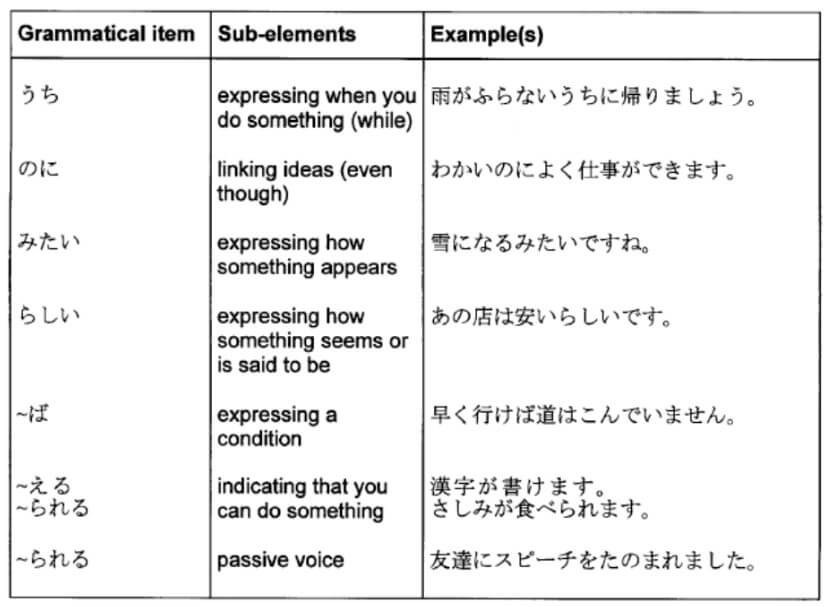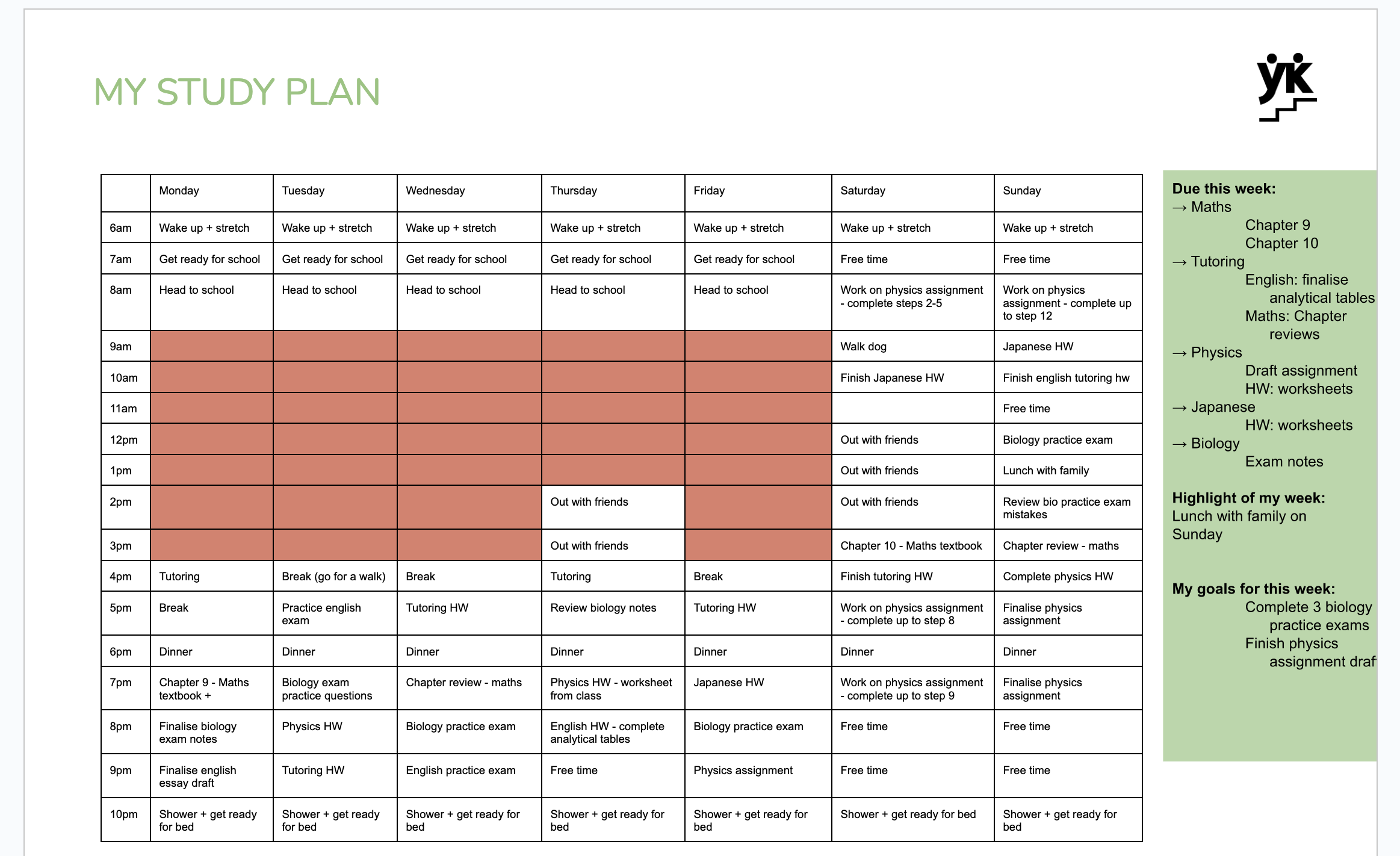
- 3 min read
How to break down your Japanese study load

Written by the YK Writing Team
A group of tutors & HSC Band 6 All Rounders led by Yuna.
Introduction
Whether you are a Japanese Beginners, Japanese Continuers or Japanese Extension student, implementing a formula for breaking down your study load will be useful when you return to the classroom.
Here’s 4 easy steps on how to break down your Japanese study load:
1. Review and revise past material
When I was studying for the HSC Japanese exam, I often found myself flicking back and forth between pages of vocabulary and expressions in my notebook, desperately trying to memorise them to no avail. It was only when I started practising active recall I found myself retaining content more effectively and actually found myself enjoying studying for HSC Japanese.
Scientific research actually finds that “Reading and re-reading notes is classed as an ineffective, time-consuming study technique that does little to significantly improve memory retention and academic performance.”
You can read more about active recall here.
So…
- In the holidays try summarising the vocabulary, kanji, key expressions from your textbook. Transfer the vocabulary list to a flashcard app like Anki or Quizlet.
- For Year 11 or 12 student, vocabulary is the foundation for all your macro skills; reading, listening, writing, and speaking. Since there are no prescribed vocabulary lists, it would be a good idea to strengthen your core knowledge.
- Review the HSC-prescribed kanji by writing them or using a flashcard app to memorise the reading of the kanji. Sometimes the typed version of the kanji is not the same as the handwritten version so be careful! If you need help with the stroke order, jisho.org is a great resource.
Here’s other great resources:
The kanji list can be found on the last page of the vocabulary list.
- Here’s a useful list:
*Japanese Vocabulary4. Grammar – Try to write sentences using all the grammar that you have learnt so far. Get feedback if you can check that the conjugations are accurate! Remember, perfect practice makes perfect! Looking for the prescribed grammar list? Find it in the second half of the syllabus. Here’s a link for you. Japanese Continuers | NSW Education Standards
2. Read your syllabus to ensure that you have not missed any key content
As a NSW high school student, your syllabus acts as a roadmap to help you navigate and ace your assessments. A strong understanding of all parts of your syllabus means that you will know what to expect during your exams. Even if you are not sitting the HSC this year, this is a great habit to start implementing for Year 7-10 students.
Japanese Syllabus
Japanese:
- HSC Japanese Continuers https://educationstandards.nsw.edu.au/wps/portal/nesa/11-12/stage-6-learning-areas/stage-6-languages/continuers/japanese-continuers-syllabus
2. HSC Japanese Extension 1 https://educationstandards.nsw.edu.au/wps/portal/nesa/11-12/stage-6-learning-areas/stage-6-languages/extension/japanese-extension-syllabus
3. Practice past exam papers
Practice past exam papers to get a feel for the format of the exam and the types of questions that may be asked. This will help you to identify areas where you need more practice. Whilst you complete these exams try stimulating the exam environment. Find a quiet place to study with no distractions, set a timer and begin. This will be especially helpful if you’re a student who finds themselves constantly under pressure during exams.
iii. Japanese:
HSC Japanese Beginners https://educationstandards.nsw.edu.au/wps/portal/nesa/resource-finder/hsc-exam-papers/2022/japanese-beginners-2022-hsc-exam-pack
HSC Japanese Continuers
HSC Japanese Extension
4. Get ahead on coursework
Understanding the key grammar and vocabulary of new topics during the school holidays will ensure that you have a solid foundation when term begins, leaving you with more confidence when approaching speaking and writing compositions. There will also be more time to ask your teachers for any clarification you may need.
Japanese: Identifying and practicing Kanji from the prescribed Kanji list will save you time during the school term. You may even wish to make flashcards and resources for you to revise and go back to during the school term.
Conclusion
We hope these steps help you break down your study load for HSC Japanese.
Here’s how you set yourself up for success after breaking down your study load.

